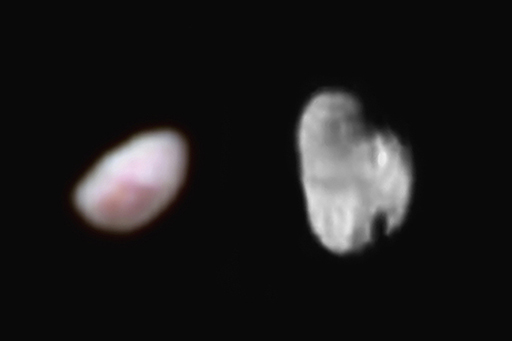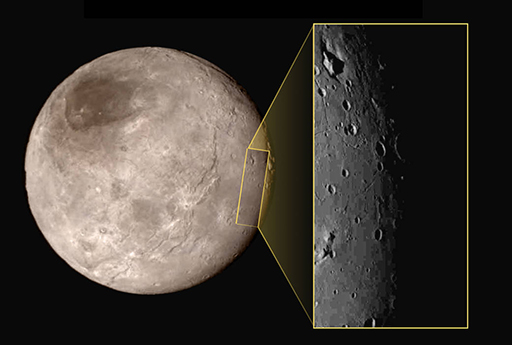3.9 The New Horizons mission
Pluto’s moons were revealed in detail in 2015 when the New Horizons mission flew past Pluto. Launched in 2006, its journey to Pluto took nine years, and radio signals transmitted back to Earth took about four-and-a-half hours to reach us. It showed that Pluto’s landscape is unlike that of Triton, even though they have similar compositions. Charon has a mixture of cratered (old) terrain and smooth (young) terrain that might have been cryovolcanically resurfaced, and is cut by major fractures.
Despite searching, New Horizons did not find any new small moons, but it did discover that the rotation axes of the four previously-known small moons point in various directions and that their rotation periods are much shorter than their orbital periods (so these are not in synchronous rotation, unlike Charon). Here are views of Nix and Hydra shown at similar scales.

You can follow the mission at this link: New Horizons [Tip: hold Ctrl and click a link to open it in a new tab. (Hide tip)]
See also:
- Pluto’s weird small moons. Rapid spin and other weirdness among Pluto’s small moons, including a nice animation.
- The best view of Nix. New Horizons’ most detailed view of Nix.
- The best view of Charon. New Horizons’ most detailed view of Charon.
- Tholins do not simply walk into Mordor Macula. A report of new results showing how methane escaping from Pluto stains Charon’s poles red.

